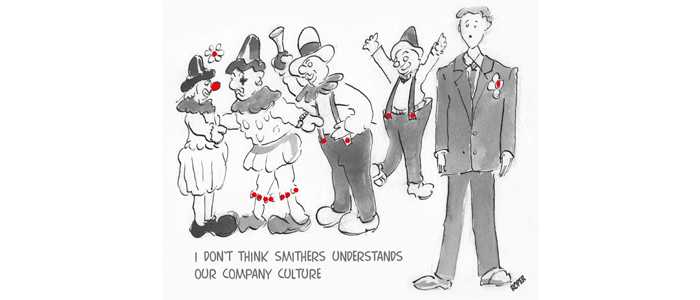You can’t “do” culture change to your organisation. Culture arises from the beliefs and underlying assumptions held by the people in the organisation. Trying to change culture by decree or through training programmes won’t affect people’s beliefs. In today’s guest blog post, Jesse Lyn Stoner explains why.
One way to change the culture is to fire a lot of people. That really shakes things up and gets change going – especially if you replace them with new people who come in with a different attitude about the company and the work.
If that doesn’t appeal to you, the only way to quickly and effectively change the culture is to involve the people you want to change in designing and implementing the change effort.
They will better understand why the change is needed and will be more invested in its success. They will better understand what is required of them and will be more committed to taking action. Instead of being the recipients of change, they will become the drivers of change. And because they understand the work and the current systems and processes, they will have ideas on the best way to implement changes needed to support the new culture and business strategies.
Culture eats strategy for breakfast. You can come up with the best strategies in the world, but if the people are not prepared to implement them, your strategies will fail. Simply explaining the change won’t work. If you only train people, without addressing the underlying attitudes, your implementation will stall.
Where to start
First, senior leadership must be aligned and truly supportive of the change, not just with lip service. They must look at their own behaviour and whether they are modelling the new values. People watch what you do more closely than they listen to what you say.
But you don’t have to wait until the leadership transformation is completed. It’s possible to begin the organisational involvement while the leaders are still working on alignment if there is a sincere commitment at the top.
Three involvement approaches
1. Vertical: Cascade top-down
This is the typical approach. Each leader on the leadership team drives the change through their own part of the organisation. The leadership team monitors progress of the entire enterprise.
Pros:
- Leaders visibly drive the change.
- Specific changes can easily be tailored for each part of the business.
Cons:
- Difficulty with coordinated efforts and consistent messages.
- Especially difficult in matrix environments where people have multiple reporting relationships.
- This is a hierarchical process and might be at odds with the new desired culture.
2. Cross-company
People from across the company come together for a series of meetings to learn about the intended changes and to get their ideas. Often these take a “town meeting” format. However, if these meetings are simply used for one-way communication, where the leaders explain and answer questions, the change effort becomes an ineffective variation of “change by decree.”
Pros:
- Opportunity to quickly collect diverse perspectives.
- Consistent messages across the organisation.
Cons:
- It takes more time to make decisions on implementation. Momentum can get lost and people might not see the connection between their recommendations and the decisions that are made.
- Tempting to leaders to hand off to HR or a project manager.
3. Large group slice
A significant slice of the organisation, representing all levels and functions, comes together for a collaborative change meeting where roadblocks are surfaced and analysed and decisions are made in real time during the meeting. The meeting is designed by a team that is a microcosm of the group that will be attending the meeting. This approach requires that leaders are aligned and able to work together as a team to make good decisions quickly.
Pros:
- Leaders visibly support and model the new culture.
- The fastest and most effective way to implement change.
Cons:
- Requires the investment and commitment of senior leaders.
- Requires having faith in the people and willingness to let go of control.
Which approach is best?
The best approach for your organisation depends on many factors including your resources, timeframe and the type of change effort you want to implement.
Set up a “change team” that is representative of your organisation to design and facilitate the change process. However, remember it is important for senior leaders to be visible champions and drivers of the change effort. If there’s a disconnect, your change effort will fail before it starts.




